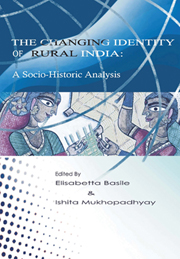INTRODUCTION
Capital and Labour Transformations in Shaping Rural Development in India
Published online by Cambridge University Press: 05 March 2012
Summary
INSTITUTIONAL EMBEDDEDNESS AND ECONOMIC DIVERSIFICATION IN RURAL INDIA
The growth of the Indian economy is likely to be constrained in the next future by the low level of socio-economic development experienced by rural areas. While the rest of the country is experiencing an increasing rate of growth, the Indian countryside is lagging behind, with slower growth rate, widespread poverty and increasing inequality. The contrast between urban/metropolitan India and rural India is more and more evident, both for the large dimension of the population that is still living and working in rural areas and for the increasing gaps between urban and rural living and working standards.
There is evidence (Harriss-White, 2003) that the pattern of growth in rural areas exerts highly negative externalities on society and environment. This is found both in agriculture – in which social and economic backwardness and deprivation coexist with rapid capitalist change and pollution – and in rural non-farm activities – in which competitiveness is pursued through low labour and resource costs. Because of this pattern of growth, the Indian rural economy is moving along the ‘low road of destructive competition’ (Pyke and Sengenberger, 1992) that leads to the depletion of the available resources and makes minimum standards of social protection for the population hardly possible in the medium to long run.
To assess the pattern of growth in the Indian countryside and its impact on living standards it is necessary to focus on three main traits that distinguish the economy and society in contemporary rural India.
- Type
- Chapter
- Information
- The Changing Identity of Rural IndiaA Sociohistoric Analysis, pp. 1 - 12Publisher: Anthem PressPrint publication year: 2009



